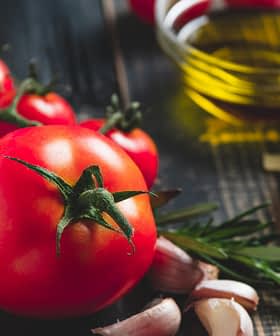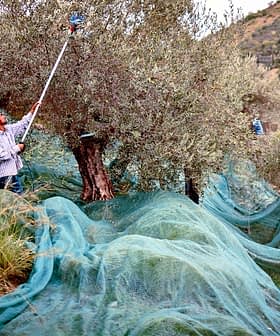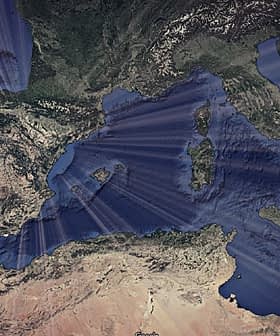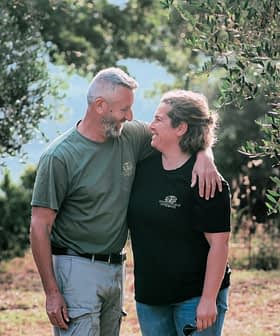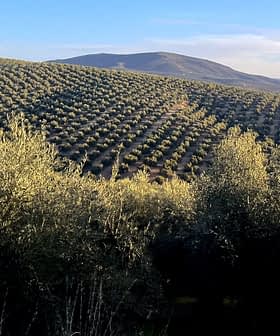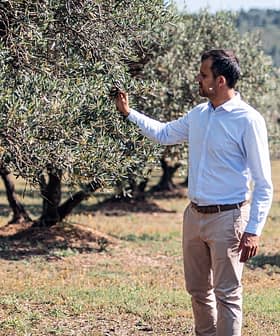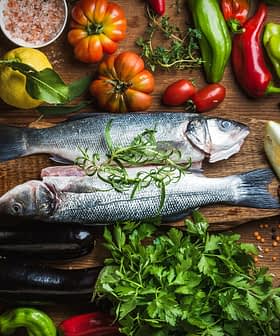IUCN Studies the Tradeoffs Between Intensive and Traditional Olive Groves
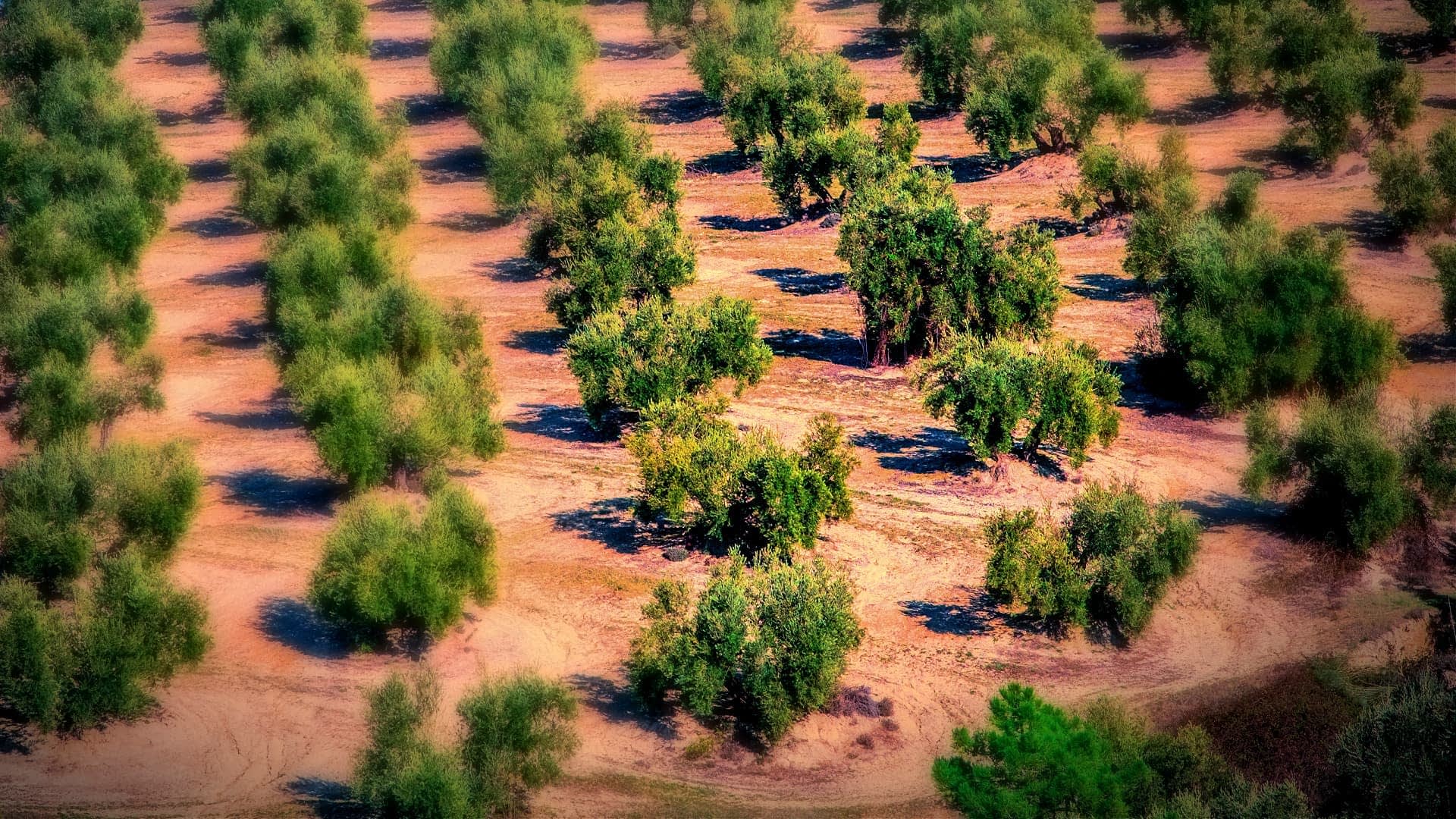
A study by the IUCN compared sustainability profiles of olive groves to other oilseed crops, highlighting the benefits of traditional cultivation for biodiversity but the negative impact of intensive methods on bird species. The study recommended a systemic approach to olive cultivation that considers biodiversity, ecosystem services, and water needs, emphasizing the importance of transitioning to more sustainable practices like organic farming and intercropping to reduce environmental impact.
A study published by the International Union for Conservation of Nature (IUCN) examined the sustainability profiles of different types of olive groves and compared them to other oilseed crops.
Since its founding in 1948, the IUCN has been at the forefront of global conservation efforts, providing critical insights into the health of our planet. It reviewed the results of academic research on different olive cultivation areas and management types and their impacts on biodiversity, ecosystem services and yields.
The study recommended adopting a systemic approach, which should include the “way by which these crops are produced, traded and consumed and the socio-economic context in which these value chains are embedded.”
There is not much difference between the impact of (monoculture) traditional cultivation and that of intensive and super-intensive cultivation on biodiversity. In the latter two cases, it only results in a larger surface area being covered.
According to academic articles reviewed by a specially selected olive cultivation expert, traditional olive groves can have higher biodiversity, but lower yields are usually obtained. Moreover, 40 percent higher plant species richness was found in organic settings compared with conventional systems.
On the downside, the study highlighted that intensive (high-density) olive cultivation has been found to have a more significant negative impact on wintering bird species, whose richness has declined significantly in super-intensive (super-high-density) orchards.
The IUCN study underlined the perennial olive tree’s slower initial growth, with an average time until initial production between three and five years, and its high susceptibility to pests and diseases as drawbacks compared with annual oil crops. Still, with a long lifespan (500 years on average), olive trees can tolerate drought and poor soils.
See Also:Ancient Olive Groves on Capri Are Reservoirs of BiodiversityThe study also focused on the vital aspect of water needs. Among the oil crops considered, olive groves have the highest water footprint, with an annual amount of 14,500 cubic meters of water required to produce one ton of oil. Linseed follows with 9,400 cubic meters, groundnut with 7,500 cubic meters and sunflower with 6,800 cubic meters annually.
Olive groves are traditionally non-irrigated and have broadly spaced trees (80 to 120 per hectare), as they are typically grown in the Mediterranean region.
Due to their deep root systems, olive trees are highly tolerant of drought. However, they are highly sensitive to the amount of rainfall received during the winter.
Optimal olive drupe development cannot be guaranteed in case of prolonged water scarcity and extreme temperatures, such as those experienced in the spring and summer across Spain and much of the rest of the Mediterranean basin in 2022 and 2023, when olive oil production fell to historic lows.
Indeed, water scarcity is a mounting risk for oil crops due to climate change. The study also stresses the adverse effects of extensive oil crop monocultures on rain and climate patterns worldwide, with “extreme weather events projected to become significantly more frequent, leading to substantial reductions in oil crop production.”
“It should not be forgotten that Spain’s traditional olive grove landscape is a monoculture, with all its consequences for biodiversity. Its ecological impact is considerable,” said Beatriz Lozano, a member of the sustainable use and management of soils research team at the University of Córdoba’s Department of Agricultural Chemistry, Edaphology and Microbiology.
The increased introduction of intensive (200 to 600 trees per hectare) and super-intensive (1,000 to 2,000 trees per hectare) olive cultivation, with their widespread use of irrigation, has been an upward trend in Spain over the last decade, particularly in the Andalusian province of Jaén.
This intensification reduces harvesting costs, increases production and diminishes the impact of the olive tree’s natural alternate-bearing nature.
Alternate bearing cycle
Olive trees have a natural cycle of alternating high and low production years, known as “on-years” and “off-years,” respectively. During an on-year, the olive trees bear a greater quantity of fruit, resulting in increased olive oil production. Conversely, an “off-year” is characterized by a reduced yield of olives due to the stress from the previous “on year.” Olive oil producers often monitor these cycles to anticipate and plan for variations in production.
However, “there is not much difference between the impact of traditional cultivation and that of intensive and super-intensive cultivation on biodiversity,” Lozano said. “In the latter two cases, it only results in a larger surface area being covered.”
The IUCN study further underlined that, as a perennial crop, olives can minimize the loss of natural ecosystems and biodiversity if grown in polyculture, thus allowing complex vegetation to develop in the olive grove. Thus, olives can play a crucial role in maintaining the quality of habitats.
See Also:How Intensive Agriculture and Olive Cultivation Impact Soil HealthThe integration of olive trees and crops as part of a silvoarable alley-cropping system has been found to provide ecosystem services – benefits that people obtain from ecosystems – such as soil restoration, water preservation, climate regulation and biodiversity enhancement.
In 2022, Lozano and her team carried out a study on intercropping in non-irrigated Mediterranean olive groves as part of the European Union’s Diverfarming project where “the aim of cover cropping was to improve biodiversity and soil quality, as well as enhance growers’ returns.”
Sustainable soil conservation measures such as intercropping saffron (Crocus sativus) or lavender (Lavandula x intermedia) in non-irrigated olive groves “can be very effective in preventing soil erosion and improving soil properties,” Lozano said.
However, she also warned that “climatic variables can have a profound impact, especially on the traditional olive growing system,” and “a cover crop’s harvest may not be guaranteed.” Moreover, “it is very difficult to obtain a positive financial return from a second crop grown in alleys in non-irrigated olive groves.”
“In times of severe water shortages, affecting even olive trees which are very resistant to drought, cover crops can hardly withstand the lack of water and have often proved unsustainable as an additional source of income for olive growers,” Lozano added.
Despite the risks associated with the viability of cover crops in non-irrigated olive groves, “in general, there has recently been an expansion in cover cropping in Spanish olive groves, spurred by specific E.U. subsidies,” Lozano said.
Indeed, official data on the surface area of olive groves with intercropped cover crops shows an impressive increase from 1.4 million hectares in 2022 – before the latest iteration of the Common Agricultural Policy (CAP) came into force in 2023 – to 2.4 million hectares in March 2024.
As practical examples, two projects in Spain related to intercropping in olive groves – including efforts to promote biodiversity through beekeeping, lavender cultivation and rural tourism in the ‘Olivares de Miel’ project and ‘Olivares Vivos,’ which, with its LIFE Olivares Vivos+ project, has extended beyond Spain into Italy, Greece and Portugal – are aimed at increasing biodiversity, reducing soil erosion and making the investment in cover crops profitable.
This can be achieved mainly through additional, comprehensive training in intercropping and dedicated efforts to improve marketing, communication and branding strategies to sell high-quality, value-added products to environmentally conscious consumers.
The IUCN Species Survival Commission declared in its report published in June 2024 that “the transition to more sustainable practices, such as organic farming and the use of cover crops, is essential for reducing the environmental footprint of olive oil production.”
This goal has been reinforced by the new provisions laid out in the E.U.’s CAP, which runs until 2027, namely the introduction of eco-schemes (for Spain, as specified in the Spanish CAP Strategic Plan and the E.U.’s Biodiversity Strategy for 2030), with the recognition of the high ecological and social value of conscious olive growers’ environmental conservation performance for increased non-commodity benefits.



